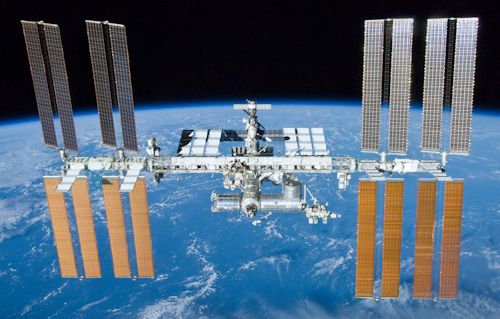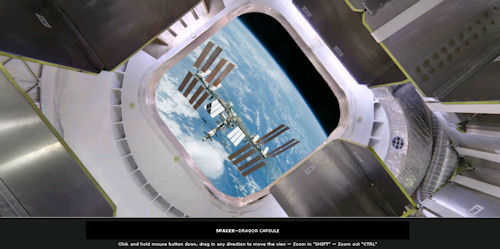
By the end of this decade we could well be on our way to the largest period of growth in human history. The global economy would dramatically increase and the overall wealth of the planet will skyrocket. The people at the lowest end of the economy will see the largest changes as they go from subsistence living to a modern middle class lifestyle made possible by this leap.
This future could be wildly off target, or it could be happening right now on a launchpad outside of McGregor, Texas. The key to this rapid growth is a simple idea. Impractical, some say impossible, it’s considered by some as far fetched as free energy or transmuting lead into gold.
But it’s not an idea that violates any laws of physics; only what we’ve done before. For a generation that’s seen the world wired electronically, watched room sized-computers shrink to devices that fit on your wrist and place face to face video calls around the planet for free, it’s a hurdle like any other, one that will take smarts, perseverance and a willingness to ignore the naysayers and do what hasn’t been done before.
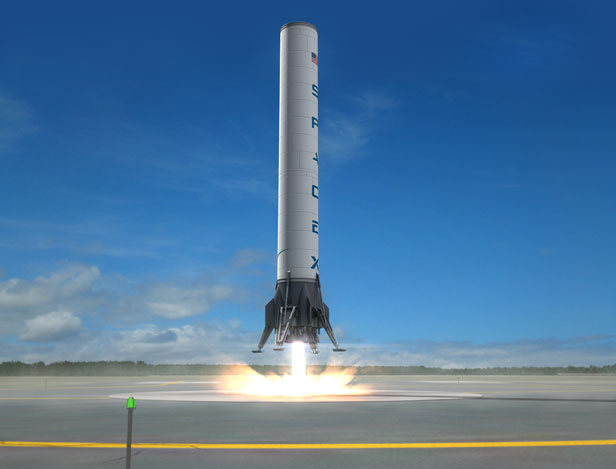
The reusable rocket
It’s a term we’ve heard before. The Space Shuttle was initially touted as ‘reusable’, when in fact only parts of it were. The large tank, the solid rocket boosters, the components responsible for most of the heavy lifting aside from the shuttle’s engines, were either burned up in the atmosphere or dropped into the ocean where salt water could corrode the parts that weren’t damaged on impact. At a $1.5 billion per launch, the shuttle hardly met the economics of reusable. It’s true cost per pound to orbit was $28,000.
A truly reusable rocket, like the kind Elon Musk and SpaceX is trying to build, can be used a 1,000 times or more. The main expense is fuel. Giving that a Falcon 9 uses only about $200,000 of fuel per launch (versus the $260,000 it costs to send a 737 around the world), expensing that capital cost over 1,000 launches ($60 million a rocket), gives you a capital expenditure of just $60,000 per launch. Round that up to $300,000 and your cost to orbit is under $15 per pound. That’s 2,000 times less than the cost on the shuttle.
In the economics of space travel, $1,000 per pound to low earth orbit was long considered the magic number where incredible economic opportunities become possible. If Elon Musk has his way and makes his even larger rocket, the Falcon Heavy, reusable, we’ll be looking at $10 per pound – less than it costs to send something cross country via FedEx.
It’s crazy. It’s insane. It’s foolish talk. And yet the world just watched astronauts on the International Space Station set foot aboard a spaceship (the first private spacecraft ever) built by people everyone was calling crazy, insane and foolish.
Now they want to build bigger rockets and think it’s possible to bring internet-like growth to the cost of going into space. I think they’ve proved they’re serious and capable. If anyone can make it happen, it’s SpaceX.
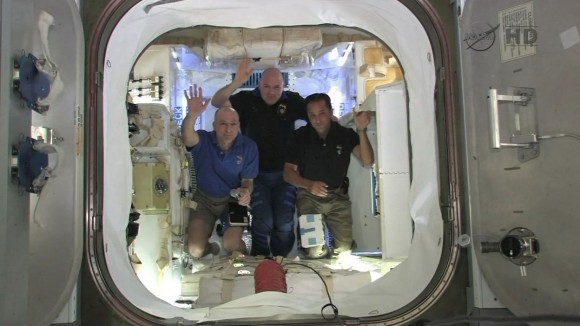
Where’s the boom?
So we can put people and satellites in space at a fraction of the cost before…what’s the big deal? What does the mean for us earthbound mortals? Everything.
Forget about space tourism, that’s low hanging fruit. In the scheme of industries, it’s only a step above renting out cabanas to cruise ship passengers. The biggest sectors of our economy aside from services and manufacturing are energy, communications and materials.
Opening up the frontier of space will change all of those radically.
First: Communications
Want more bandwidth? Want to make a clear phone call that doesn’t drop? Want to watch 4k movies on your iPhone while you’re hiking in the outback? Better yet, want the citizens of Syria and Iran to have free access to communications their governments can’t block?
Build more satellites. Lots of them. At $10 per pound, we’ll be able to blanket the planet in always-on high-speed internet access. Telecommunications companies will have to compete with underfunded rivals. Two girls in a garage could re-invent communications.
High school kids can build a communications satellite today. Unfortunately you can’t get it into space on a paper route budget (firstly, because newspapers are extinct). At a cost rivalling FedEx rates, this becomes a reality.
As bandwidth grows, so will our demand for more of it. Most of the planet is still waiting for smartphones with mere Edge-like speeds. The first-world will find all sorts of ways to push the bandwidth limits and keep the communications industry a high-profit business. We won’t be afraid to turn our phones on when we travel to other countries and will find ways to justify more bandwidth.
Second: Materials
If the dreamers at Planetary Resources have it right and some of those near earth asteroids are filled with rare metals, we could be facing an unheard of age of abundance. While finding gold in large quantities would seem like the goal, the real purpose of this mineral exploration is to find the kind of metals that have a far greater practical value than serving as bling.
The platinum group metals Planetary Resources think may abound on asteroids are some of the most import and rare kinds of materials we use in building everything from fuel cells to solar panels. Chief among them: Platinum.
Platinum costs about $1,500 per ounce. It’s the most expensive part of a fuel cell. The reason electric cars are so expensive? The battery. An abundance of platinum group metals could reduce the cost to a few cents on the dollar.
Cheap platinum would radically change the way we consume energy. Instead of getting your power off the grid, you’d plug into a fuel cell in your garage that you recycled every few months or so. For the part of the world that doesn’t have much of a grid, this is a life-changing possibility. Simple things like cheap air-conditioning could save millions of lives a year from malaria.
Third: Energy
Forget covering Arizona with solar cells. Let’s build an armada of them in space. A solar collector in earth orbit has sunlight 24 hours a day, never has to worry about clouds and runs at 144% efficiency compared to being on earth.
This would be the cleanest form of energy on or off our world.
At $10 per pound to orbit, it’s actually cheaper than what it costs to build on earth when you factor in all the ancillary costs from land leases, environmental impact and legal hurdles.
Getting that power back down to earth without creating a space beam weapon that could incinerate cities will be a challenge, but one we’ve already taken steps towards solving. It could be decades before we’re getting practical amounts of power from space. Yet it takes decades now to build a nuclear power plant or erect a wind turbine.
Abundant solar power in space also means we can use it in orbit for things like cracking water (from asteroids) into hydrogen and oxygen. Going even more out there, lots of abundant energy could one day lead to a practical means for producing antimatter – the most efficient means of containing energy and the kind of power that could take you to the other planets in days, not months and years.
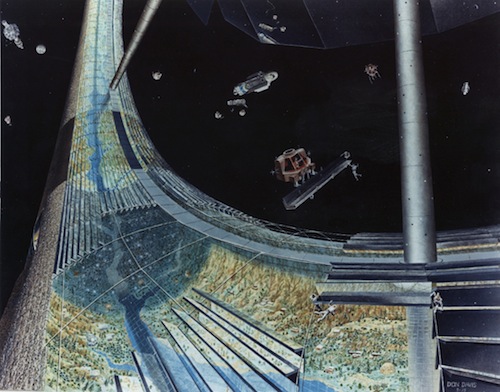
The long boom
As manufacturing moves more to rapid prototyping-style machines and becomes more of a commodity with falling prices, outside the service industry; communications, raw materials and energy are the largest parts of the global economy (agriculture is less than 4%).
To launch and service all those satellites, solar stations and asteroid mining ships, we’ll need a whole new industry. While robotics will do a lot of that work, you still need humans doing quality control and the jobs we don’t have machines for just yet.
We’ll see new companies based on doing things like providing logistics support to all these different industries, building replacement parts in orbit, training spaceworkers and a thousand other things that go with a boom.
Cheap access to space also means huge space stations, space yachts, space mansions and a whole lot of things you can do in space we never imagined on earth.
Earth orbit is just the start, but even before we set foot on Mars, there’s an entire space industry waiting to happen that goes way beyond novelty vacations for the mega-rich. We’ll thrive as an interplanetary species when exploiting the resources of space is a practical way of surviving.
The only practical limit is the number of people we can train in high-tech jobs to make this possible. To solve this problem, smart people need to be having more kids and we need to find ways to help the rest of the planet get access to better educational resources.
The near future
The exciting part is that we could know within just a few years, maybe before even before we see book five of Game of Thrones on television (or the third film in the new Spider-Man series shows on screens) if this is possible.
As we speak, a group of SpaceX engineers are in Texas test firing rockets, examining landing systems and checking off days on their calendar, bringing us closer to finding out if this is a pipe dream that’s still decades away, or something that will become a reality very soon.
This final photo is their reusable test rocket on the launch pad at their test facility in Texas. See that little line to the right? That’s the SpaceX Dragon and the ISS in orbit overhead.
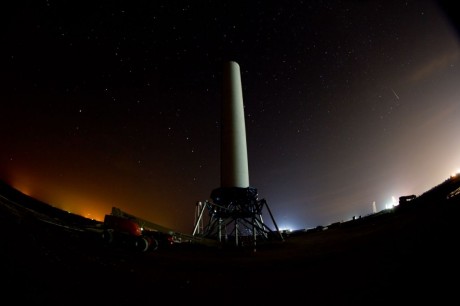
It’s one thing to dream about the stars, it’s another to go to work and look up and see where you’ve been and know where you’re going next.
Andrew Mayne is a science fiction and thriller author. His website can be found at AndrewMayneBooks.com
